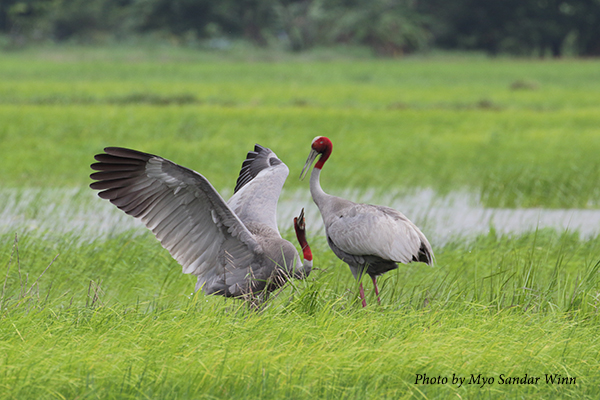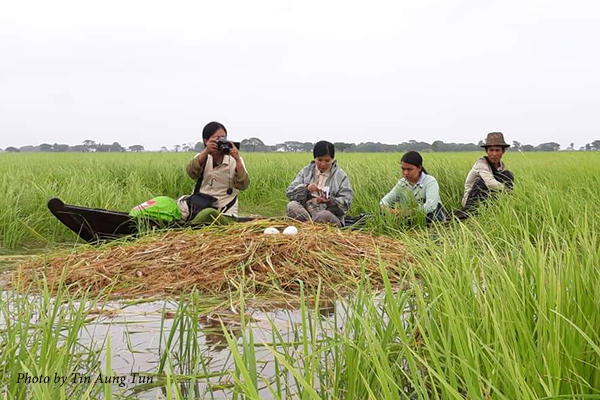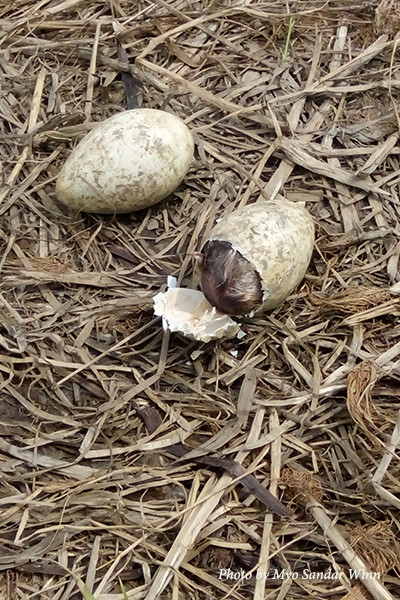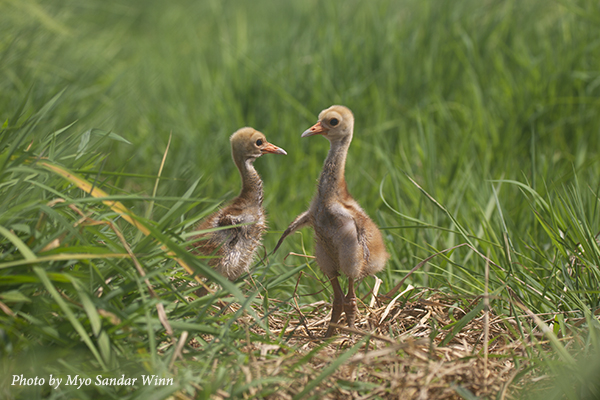
A small population of about 400 Sarus Cranes occurs in Myanmar, mostly in the Ayeyarwady River Delta. These Sarus Cranes are isolated from the neighboring populations in India and the Southeast Asian countries of Thailand, Vietnam and Cambodia. The Sarus Cranes in Myanmar nest and feed on large naturally-flooded rice fields and wetlands interspersed with Eleocharis sedges that produce the tubers they love.

During the Sarus Crane’s breeding season from June to November 2018, the Myanmar Crane Team conducted weekly surveys in 102 villages in the Ayeyarwady Region, and regularly monitored 78 crane nests. Of these nests, five were abandoned because of disturbances. One hundred and fifty-six eggs were recorded from the remaining 73 nests, from which 125 chicks were hatched and 87 eventually fledged. The fledgling success was almost 70 percent and crude breeding success, the ratio of fledgling birds versus the number of laid eggs, was 56 percent.

The team also surveyed the entire Ayeyarwady Delta to locate new crane sites and estimate the total population. The team found 299 Sarus Cranes, of which 54 were juveniles. Seven new cranes sites were found in the coastal area and four new sites discovered in the upper delta. The finding of crane sites in the coastal area is an important discovery because it provides the first records of Sarus Crane habitats in the coastal zone of the Ayeyarwady Delta.

 Story submitted by Dr. Tran Triet, Southeast Asia Program Coordinator for the International Crane Foundation. Click here to learn more about our work in South/Southeast Asia.
Story submitted by Dr. Tran Triet, Southeast Asia Program Coordinator for the International Crane Foundation. Click here to learn more about our work in South/Southeast Asia.
